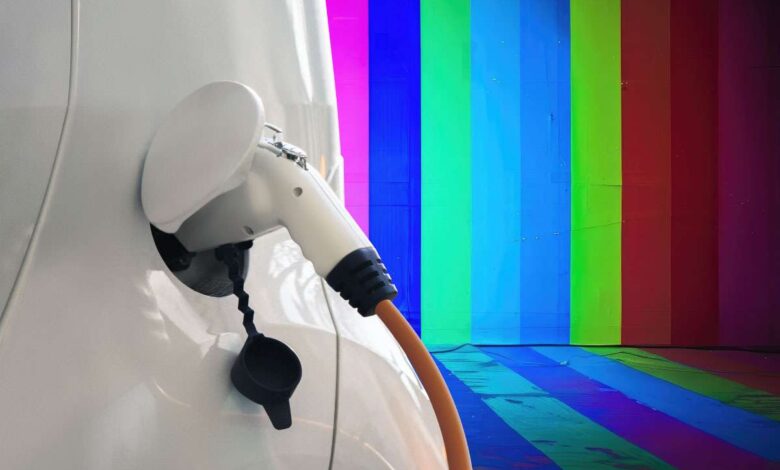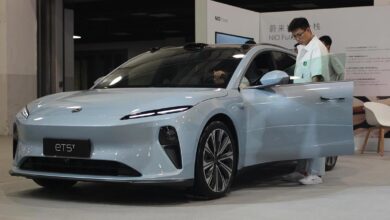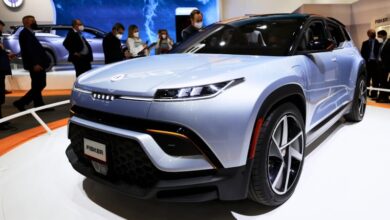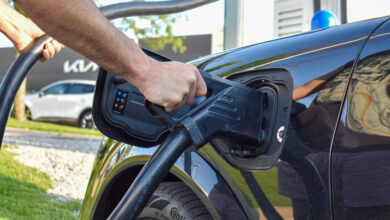Commercial Property Owners Navigate EV Charger Installation Challenges

A slow start to this year’s U.S. electric vehicle sales led to speculation that the EV revolution may be tapering off. Flat sales in the first quarter combined with Tesla laying off ten percent of its global workforce and Ford dramatically pulling back on electric vehicle expansion plans. While none of this was good news for the EV market, a closer look at the data shows a brighter picture.
Six of the ten biggest electric vehicle makers in the U.S. saw sales grow at a blistering pace in the first quarter compared to a year ago. In the U.S. and worldwide, electric vehicle sales are estimated to increase by about 20 percent this year. That’s less than the 46 percent growth rate in America last year, but a torrid rate like that can’t be sustained over the long term. Even if the global electric vehicle market continues at this slower pace indefinitely, virtually all cars will be electric within a decade.
Sustainability advocates express concerns about a potential halt in the adoption of electric vehicles if Donald Trump is elected and some of the government subsidies are rolled back. Even if that happens, the market may have already reached a tipping point. Last year, a record 1.2 million Americans purchased electric vehicles, accounting for 7.6 percent of all new car and truck sales. Analysts project that electric vehicle sales could surpass the ten percent mark this year, indicating a rapid shift from the margins to the mainstream. This suggests that widespread adoption of EVs is not just a possibility but a highly likely scenario soon.
Property owners have been paying close attention to this trend for a while now. As electric vehicle use accelerates, real estate owners can reap significant benefits by installing EV charging stations. Becoming a ‘charge point’ can attract and retain tenants, improve a property’s sustainability metrics, and generate new revenue streams. These benefits apply to assets in almost every class, from hotels to retail to offices.
Commercial properties are critical hosts of charging stations for electric vehicles and fleets. This is especially essential as the U.S. continues to expand charging infrastructure throughout the country. As recently as 2020, China had almost ten times more public charging stations than the U.S. Thousands of charging stations have been built in the U.S. since then. At the end of the first quarter, there were about 8,200 public, fast EV-charging stations in America, or about one for every 15 gas stations. The vast electron deserts in the U.S. are starting to get filled up, but commercial buildings can still fill a vital need by adding more charging infrastructure to the map.
While many property owners have already seized the opportunity to install charging stations, this venture is still relatively new to the industry. Despite short-term challenges like high inflation and long-term decarbonization plans that are diverting funds to other areas, it’s crucial to recognize the strategic importance of early adoption. Property owners can position themselves ahead of the curve by setting up EV charging stations now, gaining a competitive edge before electric vehicles become the new normal.
Setting up charging infrastructure is a complex task, though. Without careful evaluation and strategic planning, the results could be inadequate, leading to higher expenses, a stressed power grid, lower-quality implementation, or missed revenue opportunities. Patrich Jett is the Chair of Colliers Global Automotive Desk and has become the subject matter expert at Colliers International for global automotive real estate. He advises property owners to consider several factors before installing chargers, such as demand analysis, charging station types, regulations and permits, electrical supply, and charging network integration. A fundamental question to ask at the outset is whether there’s enough local demand to justify the investment. “Conducting a thorough analysis of EV adoption rates, projections, and trends in the region can provide valuable insights into the demand,” Jett said.
Analyzing local demand is crucial because much of the electric vehicle inventory in the U.S. is concentrated along the coasts and in the nation’s busiest auto markets. According to CarGurus data, nearly one-third of new electric vehicles are shipped to California, Florida, or Texas. The data makes sense because those are the nation’s three most populous states. But other states in the country’s heartland have far fewer electric vehicles on the road. At the end of the first quarter, about 23 states had fewer than 1,000 electric vehicles for sale available in the entire state, excluding brands like Tesla that aren’t sold at traditional dealerships. Nine states had fewer than 400 electric vehicles for sale. The implications for property owners are obvious. Installing electric charging stations at a property in California makes perfect sense in most cases, but maybe not so much in other states.
Property owners must also consider the arrangements for owning and operating EV charging infrastructure. Full ownership involves investing in the equipment, taking on the entire risk and capital expenses, and monetizing charging services through direct sales to drivers or tenant lease agreements. Building owners can also outsource the project, enabling a third party to install the charging stations and pay the owner for the space. This model shifts the cost of ownership and repair to the vendor, but property owners still get the full revenue potential of providing EV charging.
Another option is allowing tenants to install their charging stations. This is usually only viable for tenants in long-term contracts, and the model brings challenges. Different tenants may choose different systems, so stations would be incompatible and require expensive upgrades in the future. In addition, when charging stations are shared among fewer users, the chargers idle more frequently, which increases their relative cost. Building owners could also offer charging stations as a subsidized or even free amenity to attract tenants seeking sustainability features. Charger access could be negotiated as part of lease contracts or allowed on a pay-per-use basis.
Whatever approach real estate owners take is usually part of a long-term portfolio strategy. All approaches have benefits and drawbacks. This is only part of the strategic decision-making process for installing charging infrastructure. Another consideration is whether to invest in more expensive fast-charging stations (Level 3) versus cheaper options that don’t provide as robust a charging capacity (Levels 1 and 2). Level 3 chargers, also called DC fast chargers, have the potential to charge an electric vehicle in about 20 minutes fully. They also have the most power consumption, with load requirements equaling five to ten central air conditioners per charger.
Many suspect that electric vehicles will follow a similar trajectory to adopting new technology from the past. Like color TVs in the 1950s, adoption starts slow, seemingly all at once, they are everywhere. A Bloomberg Green analysis found that by the end of 2023, 31 countries had surpassed what’s become known as the EV tipping point. When five percent of new car sales are fully electric, passing this threshold signals the start of mass adoption.
Real estate owners are paying close attention to this trend because electric vehicle charging stations may soon become an expected amenity in many asset classes. Property owners who begin the process of installing EV charging infrastructure now may not only gain a competitive advantage but also gain valuable time in sorting through the complexities of installation. There’s no one-size-fits-all solution for EV charging across real estate properties, but there are plenty of aspects to scrutinize. Advanced planning now may lead to significant savings and far fewer headaches.



